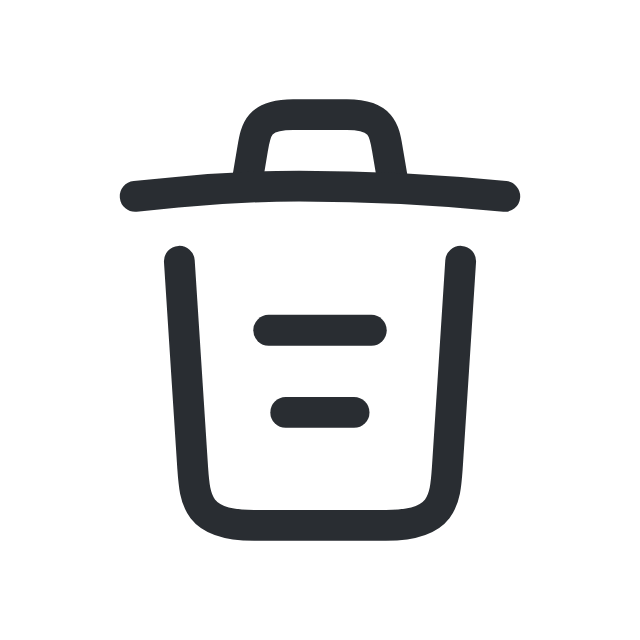Federal Direct Stafford Loans
Federal Stafford Subsidized and Unsubsidized Loans
The federal government makes subsidized and unsubsidized Stafford loans to students attending participating schools across the country. The U.S. Department of Education is the lender.
The main difference between subsidized and unsubsidized Stafford Loans is that the subsidized Stafford is available only to those who can demonstrate financial need, and the interest is paid by the government while the student attends school at least half time. With the unsubsidized Stafford, the student pays the interest while enrolled.
If you encounter words you don't understand, visit our loan terminology page and reference it while you read.
Direct Subsidized Stafford Loans
Who is Eligible?
To be eligible for the Federal Direct Subsidized Stafford Loan, you must attend school at least half time and be determined to have financial need. You also must meet certain conditions to receive federal aid.
How Much Money Can You Get?
Depending on whether you are a dependent or independent (self-supporting) student, you can borrow the following amounts for your education:
| Academic Level | Subsidized and Unsubsidized | Additional Unsubsidized Loan Amount | Aggregate Loan Limits |
|---|---|---|---|
| Freshman | $3,500 | $2,000 | $31,000 (no more than $23,000 can be in subsidized loans) |
| Sophomore | $4,500 | $2,000 | |
| Junior, senior and subsequent undergraduate levels | $5,500 | $2,000 |
| Academic Level | Subsidized and Unsubsidized | Additional Unsubsidized Loan Amount | Aggregate Loan Limits |
|---|---|---|---|
| Freshman | $3,500 | $6,000 | $57,500 (no more than $23,000 can be in subsidized loans) |
| Sophomore | $4,500 | $6,000 | |
| Junior, senior and subsequent undergraduate levels | $5,500 | $7,000 | |
| Graduate and professional students | $8,500 | $12,000 | $138,500* (no more than $65,500 can be in subsidized loans) |
* The aggregate limit for graduate and professional students enrolled in certain approved health professional programs is $224,000.
All the above annual borrowing amounts assume enrollment in a program that is at least one academic year long. If your enrollment period is less than a full academic year, your annual borrowing limits will be smaller.
After you sign a promissory note, your loan will be sent to your school, either by electronic funds transfer or by check made payable to both you and your school. Most loans are disbursed to you in two or more payments, rather than a lump sum. Because of this, you should plan your personal finances accordingly.
What's the Application Process?
You apply any time during the year, but obtaining a loan may take several weeks. There are two basic methods of application -- paper and electronic. Your school will tell you which method it prefers. Each method begins with filing the Free Application for Federal Student Aid (FAFSA).
If a need analysis has already been performed for you by the school, you might arrange a loan in two to four weeks. If no need analysis has been done, it could take several months. Therefore, be sure to:
- Plan ahead and ask your school which application method it prefers, and how long it will take to apply.
- Find out whether you're eligible for a Federal Pell Grant. This is required before your school can process the loan application and disburse loan funds.
- Be sure you understand the loan repayment terms.
The interest rate on the Federal Direct Subsidized Stafford Loan depends on when you took out the loan:
- Undergraduate students: If the first disbursement of your subsidized loan is between July 1, 2012 and June 30, 2013, the interest rate on your loan is fixed at 3.4 percent.*
* A fee of 1 percent is deducted from each disbursement.
The federal government will pay (or subsidize) the interest on the loan while you are enrolled on at least a half-time basis. In most cases, you must begin repaying the loan six months after you leave school or drop below half-time status. Typically, you have up to 10 years to complete repayment.
The amount of your payment depends on the size of your debt. However, you will pay at least $50 per month in principal and interest. Under certain conditions you may defer (postpone) payments for up to three years. Ask your financial aid administrator or read your promissory note to obtain information about deferring payment.
Direct Unsubsidized Stafford Loans
For students without demonstrated financial need, an unsubsidized Federal Stafford Loan is available.
The interest rate on Direct Unsubsidized Loans is fixed at 6.8% for all borrowers (undergraduate and graduate). A fee of 1 percent is deducted from each disbursement.
Borrowers of the Unsubsidized Stafford Loan are required to pay interest on the loan while in school.
You may make monthly or quarterly interest payments to your lender -- or you may choose to have your interest added to the principal of the loan. This is called "capitalization." This can occur during:
- The grace period -- the time before beginning repayment.
- Periods of authorized deferment -- postponement.
- Periods of forbearance -- authorized delay in loan principal payment.
Four repayment plans are available to borrowers with either subsidized or unsubsidized loans:
- The Standard Repayment Plan requires a fixed amount (at least $50) to be paid each month for up to 10 years.
- The Income Contingent Repayment Plan bases the monthly repayment amount on annual income, family size and the loan amount.
- The Income-Based Repayment Plan bases payments on total federal loan payments as a percentage of income.
- The Extended Repayment Plan allows the borrower to extend repayment over a period of 12 to 30 years, depending on the loan amount.
- Under the Graduated Repayment Plan, payments are lower at the beginning of the repayment period and then increase every two years over 12 to 30 years.
For more information, call (800) 848-0979 or visit https://studentaid.gov/.
Quick Links
- Why College?
- Explore Your Interests & Careers
- Prepare at School
- Summer Academic Enrichment Program
- Earn College Credit in High School
- Recommended High School Classes & Graduation Requirements
- Advice for Students with Disabilities
- Succeed as an Adult Student
- Useful College Prep Resources
- Minnesota Goes to College!
- Get Ready Program Overview
- College Planning Presentation Information
- College Navigator Presentation Request Form
- Minnesota Indian Scholarship Program Outreach
- Competitive Grant Programs
- Dual Training Grant
- Public Engagement Calls
- "Life After Now" Podcast
- Certified Nursing Assistant Training
- Direct Admissions Minnesota
- Collecting Data from Minnesota Postsecondary Institutions
- Campus Financial Aid Administrator Resources
- Statewide Financial Aid Conference
- Campus Student Enrollment Reporting Resources
- Ordering Materials for Your Students
- Supplementing Your College Counseling
- Early Awareness Efforts
- Student Homelessness in Higher Education Resources
- Shared Library Resources
- MN FAFSA Tracker
- Campus Sexual Violence Prevention and Response
- Statewide FAFSA Filing Goal
- Financial Aid Estimator
- Online Applications
- About Financial Aid
- What Does College Cost?
- Tips for Lowering the Cost of Higher Education
- Institutional Payments
- Financial Aid You Don't Repay
- Financial Aid You Must Repay (Student Loans)
- Financial Aid You Earn
- Military Service Education Benefits
- Reduced Out-of-State Tuition Options
- Education Tax Benefits
- New Video Demystifies Paying for College
- Public Service Loan Forgiveness
- Useful Online Resources
- Ready, Set, FAFSA!
- Data Maps and Infographics
- Educational Attainment Goal 2025
- Minnesota Measures
- Minnesota P-20 Statewide Longitudinal Education Data System
- College Readiness & Participation Data
- Student Enrollment Data
- Degrees, Graduation Rates, Attainment & Outcomes
- Financial Aid Data & Trends
- Tuition & Fees Data
- Student Health and Safety
- Institution and Data Search
- Transfer Students
- Research Reports
- A-Z Data Table Index




